#Holiday rituals worldwide
Explore tagged Tumblr posts
Text
Discover enchanting Christmas customs from diverse cultures with our captivating exploration of 'Fascinating Christmas Traditions From Around The World.
#Christmas around the world#Christmas diversity#Christmas traditions#Cross-cultural celebrations#Cultural diversity#Cultural holiday insights#Diverse holiday experiences#Festive customs#Global celebrations#Global Christmas practices#Global festive heritage#Holiday culture#Holiday customs#Holiday rituals worldwide#International holidays#Multinational Christmas traditions#Unique holiday experiences#Unique traditions#Worldwide festivities#Yuletide rituals#the junior age
2 notes
·
View notes
Text
Hundreds of Jewish anti-war demonstrators have been arrested during a Passover seder that doubled as a protest in New York, as they shut down a major thoroughfare to pray for a ceasefire and urge the Senate majority leader, Chuck Schumer, to end US military aid to Israel.
The 300 or so arrests took place on Tuesday night at Grand Army Plaza, on the doorstep of Schumer’s Brooklyn residence, where thousands of mostly Jewish New Yorkers gathered for the seder, a ritual that marked the second night of the holiday celebrated as a festival of freedom by Jews worldwide.
The seder came just before the US Senate resoundingly passed a military package that includes $26bn for Israel.
#JVP#protest#antiwar#GazaGenocide#Chuck Schumer#imperialism#Brooklyn#arrests#repression#NYPD#Israel#FreePalestine#seder#Passover
28K notes
·
View notes
Note
I want to learn more about Jewish culture and history after a recent Ancestry test confirmed my family are Ashkenazi Jews, but the process is daunting with the state of misinformation and antisemitism in the USA. How can I start if going to a synagogue and asking is just not an option? (Comments and info in tags are welcome)
A few places to start. :)
I have tried to provide a basic, broad selection of sites across a number of different strains of thought within the Jewish world. None of these links are an endorsement of a particular site, publication on that site, or point of view on that site. We're Jews: we disagree strenuously about deeply essential things & are still one people.
I really hate that I have to say these things, but every time I post about Judaism at all, someone comes through like they think they're Encyclopedia Brown or some shit, trying to sniff out what I 'really mean' by what I post. What I mean is that these are basic resources. :)
115 notes
·
View notes
Text
Stargazing-Ishtar X Reader
Happy Halloween!

It was the night of Halloween at The Clocktower. A night of celebration, ill thought out schemes, and the teachers eyeing their bags of candy set aside for when the night came to a close and all those dressed as ghouls and goblins filtered out.
Now, if only you were among those filtering out and about on the closest thing there is to a worldwide holiday in the world of Magi.
Instead, you were standing in one of the auditoriums used to teach the importance of proper alignment, depiction, and drawing of magical circles, having been badgered by your friends and associates into this hairbrained endeavor.
All because they learned you were studying systems of summoning in different magical systems in the European continent.
Yes, the name needed some work, but that could be left until later.
What could not be left until later, was you having to keep whacking your associates over the head any time they tried to touch the tome in your hand.
“C’mon! It can’t be that dangerous!” one of the many onlookers cried.
You ignored them in favor of ensuring that this was not screwed up and you didn’t accidentally summon some form of ultimate evil into the world.
…Again.
That aside, everything was almost ready, all you needed to do now was to add the final line.
The sound of your chalk scratching into the coarse material of the ground that had been infused with countless summoning attempts and experiments echoed in your ears.
With that, the complete symbol of Ishtar was inscribed upon the ground, with a few cautionary measures of course..
Everything was ready, all the precautions had been taken, not a single thing had been unaccounted for in your calculation and preparation.
Nothing was left to be done, save for the incantation.
You walked over towards the head of the room, the page of your tome being turned to the page that held the proper incantation.
A heavy breath left your mouth as you turned around, your circuits beginning to burn and thrum with power under your skin as you raised your hand towards the circle and began to chant.
“Spirit of Venus, Remember!”
The temperature dropped as the words left your mouth and ice began to form over the windows.
“ISHTAR, Mistress of the Gods, Remember!”
The circle began to glow with golden light as your audience started to grow fearful.
You couldn’t blame them, this wasn’t supposed to be what happened.
Had they underestimated the seriousness of all this?
Did you mess up on the sign?
“ISHTAR, Queen of the Land of the Rising of the Sun, Remember!”
The temperature dropped even further as a hole in the world appeared before you and, without warning, a vacuum formed.
You were getting worried now, but you had to keep going unless you wished to run the risk of something truly horrible occuring.
“Lady of Ladies, Goddess of Goddesses, ISHTAR, Queen of all People, Remember!”
The hole grew bigger and the vacuum grew more powerful as fearful screams filled the auditorium.
You felt your body getting pulled towards the hole, splitting your focus between keeping the ritual moving and not being pulled into the void.
“O Bright Rising, Torch of the Heaven and of the Earth, Remember!
O Destroyer of the Hostile Hordes, Remember!
Lioness, Queen of the Battle, Hearken and Remember!”
The hole continued to grow as your audience fled, pushing and trampling over one another to escape.
You wished you could join them.
This was nothing like anything you had tried before.
“From the Gate of the Great God NEBO, I call Thee!”
Pinpricks of light ignited in the void of the hole as the gate began to open.
“By the Name which I was given on the Sphere of NEBO, I call to Thee! Lady, Queen of Harlots and of Soldiers, I call to Thee!”
Light and color exploded within the gate as nebulae formed and a perfect look into the distant cosmos sat before you.
“Lady, Mistress of Battle and of Love, I pray Thee, Remember!
In the Name of the Covenant, sworn between Thee and the Race of Men,
I call to Thee! Hearken and Remember!”
A light began to form directly before the open gate, slowly morphing and attempting to take shape.
“Suppressor of the Mountains!
Supporter of arms!
Deity of Men! Goddess of Women! Where Thou gazest, the Dead live!”
The form began to grow more defined, more real, as the form of a woman made of light reached forwards and towards you, her hand piercing the veil.
“ISHTAR, Queen of Night, Open Thy Gate to me!
ISHTAR, Lady of the Battle, Open wide Thy Gate!”
Her form slowly came towards you, reaching outwards as it turned from light and into something real.
“ISHTAR, Sword of the People, Open Thy Gate to me!
ISHTAR, Lady of the Gift of Love, Open wide Thy Gate!
Gate of the Gentle Planet, LIBAT, Open unto me!”
Her hand was barely a step away as she reached towards you, her body becoming flesh and her eyes looking directly into yours.
Your vision was growing dark, you could feel your body grow weak from fighting against the vacuum, but you still had to continue the ritual, no matter how much your body and mind was screaming at you to stop, even when the hardest part was coming up.
Especially because the hardest part was coming up.
“IA GUSHE-YA! IA INANNA! IA ERNINNI-YA!
ASHTA PA MABACHA CHA KUR ENNI-YA!
RABBMI LO-YAK ZI ISHTARI KANPA!
INANNA ZI AMMA KANPA! BI ZAMMA KANPA!
IA IA IA BE-YI RAZULUKI!”
The final word escaped your lips, and the woman was fully formed before you, floating in the air as the hole in the world closed shut.
The woman had eyes like rubies, hair like onyx, and a smile more brilliant than diamonds.
She was beautiful, she would easily fit into any definition of beauty in the world.
Then, as she looked into your eyes, she spoke.
You could barely hear her, the entire world sounding like it was under water.
However, you could still faintly hear her.
“Are You My Master?”
After that, everything went black.
-=-=-=-=-=-=-=-=-=-=-=-=-=-
You groaned as you opened your eyes, the harsh light of the infirmary burning your retinas, forcing your eyes closed once more.
Your entire body ached in a way and in places you didn't know could even ache like that.
Not to mention your circuits, which you could tell you had overworked due to the feeling of intense, burning agony under your skin.
“Are you alive?” the voice of Lord El Melioi asked you.
“Not sure… try again later…” you groaned as you turned onto your side, briefly opening your eyes to see the woman from the cosmos, looking quite irate in some second hand clothes kept by the doctors and nurses in the case of an experiment turning… incendiary.
You blinked several times before turning over once more and towards Lord El Melioi who was currently chewing on a piece of gum in place of his cigarette.
“So, all that happened?” you asked.
“Correct.” the man responded with a pathetic attempt to keep his irritated expression in check.
“So… how screwed am I?” you asked.
“Royally, if it wasn’t for some extenuating circumstances.” the man responded.
“Hmm.” was all you said in response.
“So, who’s the lady?” you asked.
“I am RIGHT here!” the woman exclaimed in irritation.
“We do not know, but she claims to be the goddess Ishtar.” the old man answered.
“BECAUSE I AM!!!”
“We lack the evidence to prove her claim.” The Lord El Melioi declared.
“I will vaporize you, mark my words!” the woman who claimed to be Ishtar nearly shouted.
“I can see why that would be a bit hard to confirm…” you muttered as you turned onto your back.
“Seeing as if the woman’s claims are true-” the man began before being interrupted.
“THEY ARE!!!” the woman who claimed to be Ishtar whined.
“-It would mean that you dug up the bones of a goddess on Halloween night.”
You let out a groan.
“This is going to have massive repercussions, isn’t it?” you asked as you closed your eyes.
“Most definitely.” was all Lord El Melioi said in response.
-=-=-=-=-=-=-=-=-=-=-=-=-=-
You stumbled into your room and fell face first onto your bed, the woman who insisted upon being called Ishtar walking right behind you as you did so before making a bee-line to your closet and throwing it open.
“These are all your clothes?” Ishtar asked, flabbergasted.
“Yes.” You groaned into the bed.
“It’s the same outfit four different times!” Ishtar cried, abhorred.
“Exactly.” you said in response.
“This just will not do!” Ishtar exclaimed before walking over to you and peeling you off the bed to grab you by the collar.
“I REFUSE to have my spouse dress like some common cretin!” the woman cried.
“I don’t recall signing any marriage papers.” was all you said in response as your head lolled to the side.
“IT WAS IMPLIED IN THE SUMMONING!!!” Ishtar shouted.
-=-=-=-=-=-=-=-=-=-=-=-=-=-
It has been a year since you got a surprise wife on Halloween night.
She was a bossy, bullheaded, prideful, and big headed woman who had an ego the size of a galaxy.
You wouldn’t have her any other way.
Sure, she had a habit of threatening anyone who got too close to you with disintegration, but that is par for the course when in a relationship with a Goddess.
That said, she was still trying to get you to wear more “Appropriate Clothes For Your Station”.
She had continuously failed time and time again.
It was one of the many little games the two of you played.
Much like how Ishtar floated around you and took out whatever “Tax” she wished from any food you purchased.
Or how you, upon finding out she was ticklish, mercilessly attacked her every time she let down her guard.
The two of you were insufferable together, and you were frequently told so.
In all honesty, you wouldn’t have it any other way.
Ishtar might have the looks of a woman people would go to war for, but her personality was absolutely horrible, in a charming and adorable way.
And though you would never tell her for fear of her head getting so big it pops, you wouldn’t have her any other way.
As you continued to muse on Ishtar and the events of the previous year, a finger began to poke you in the side.
You ignored the sensation for a few moments longer, until a petulant whine cut through the silence and you were attacked by the arms of a woman wrapping around you like snakes and her body falling onto yours as you sat in your chair.
“Oh, hello Ishtar.” you muttered as you continued to gaze out at the starry night.
“You know, a girl could get really jealous if someone was looking at something else that wasn’t her.” Ishtar not so subtly hinted at as she tried to gently force you to look at her.
“What do you mean? I am looking at you! After all, these are the same stars as the night we met. Though, I have to admit that I didn’t pay much attention to them at the time.” You retorted with a soft smile on your face as you adjusted yourself and Ishtar to better ensure comfort.
Ishtar let out a laugh as she turned her eyes to look at the stars as well.
“I never took you as the reminiscing type.” the goddess muttered with a smile.
“I never took the Goddess Ishtar to be one to enjoy scooters. It seems we are both full of surprises.” You jabbed at her.
“You’re horrible!” Ishtar bemoaned with crocodile tears in her eyes.
“No worse than you dear, no worse than you.” was all you said in response as the two of you fell into a comfortable silence, gazing at the stars.
#fate x reader#fate#fgo#fgo x reader#fate grand order x reader#ishtar#fgo ishtar#ishtar fgo#ishtar x reader#ishtar fgo x reader#fgo ishtar x reader
53 notes
·
View notes
Photo

Halloween is among the oldest traditions in the world as it touches on an essential element of the human condition: the relationship between the living and the dead. The observance evolved from ancient rituals marking the transition from summer to winter, thereby associating it with transformation, which is still a central theme of the holiday. Every recorded civilization has created some form of ritual observance focused on what happens to people when they die, where they go, and how the living should best honor those who have passed or respond to the dead who seem unwilling or unable to move on. Countries around the world today celebrate Halloween in one form or another, from Mexico's Day of the Dead to China's Tomb Sweeping Day. The modern-day observance of Halloween in countries such as the United States and Canada – where this tradition is most popular – share in this ancient tradition, even though some aspects of the holiday are relatively recent developments and can be traced back to the Celtic festival of Samhain. Christian groups through the years have routinely attempted to demonize and denigrate the observance, in part by repeating the erroneous claim that Sam Hain was the Celtic god of the dead and Halloween his feast. This error comes from the 18th-century British engineer Charles Vallancey, who wrote on the Samhain festival with a poor understanding of the culture and language, and has been repeated uncritically since. It was actually the Church itself, however, which preserved the Samhain tradition in the West by Christianizing it in the 9th century, setting the course for a pagan Northern European religious tradition's transformation into a worldwide secular holiday which has become the most popular – and commercially lucrative – of the year, second only to Christmas.
31 notes
·
View notes
Text
𓉸ྀི HAPPY HALLOWEEN! 𓉸ྀི

Halloween, celebrated on October 31st, has a rich history rooted in ancient traditions and diverse cultural practices. While today’s Halloween is known for costumes, trick-or-treating, and eerie decorations, its origins reveal a complex tapestry of customs from various cultures.
Origins in Samhain
The origins of Halloween can be traced back to the ancient Celtic festival of Samhain, observed by the Celts in Ireland and other parts of Europe over 2,000 years ago. Samhain marked the end of the harvest season and the beginning of winter, a time when the boundary between the living and the dead was believed to be particularly thin. On the night of October 31st, the Celts believed that the souls of the deceased returned to the earth. To honor these spirits and protect themselves, they lit bonfires and wore costumes, often made from animal skins.
The festival held significant agricultural importance and was imbued with spiritual beliefs. The Celts thought the presence of the dead could bring either fortune or mischief, prompting rituals to appease these spirits. It was common to leave food and drink outside homes to satisfy wandering souls.
Transition to Halloween
By the 8th century, Pope Gregory III designated November 1st as All Saints' Day, intended to honor all saints and martyrs. The evening before became known as All Hallows' Eve, which eventually transformed into Halloween. The Catholic Church's efforts to Christianize pagan practices led to a blend of religious observance and folk traditions, paving the way for the Halloween we recognize today.
In the 19th century, Halloween began to gain traction in the United States, especially among Irish immigrants fleeing the Great Famine. These immigrants brought their Samhain customs to America, which evolved into practices like guising—children dressing in costumes and going door-to-door for treats. This practice laid the foundation for modern trick-or-treating, which became widely popular by the early 20th century.
Halloween Today
Modern Halloween features a variety of customs, including costume parties, haunted houses, and trick-or-treating. The holiday has transformed into a significant commercial event in the United States, with billions of dollars spent annually on costumes, decorations, and candy. This commercialization has shifted some aspects of the holiday away from its spiritual origins, emphasizing entertainment and community engagement.
Cross-Cultural Parallels
While Halloween has distinct origins, many cultures worldwide celebrate similar festivals that honor the dead and explore themes of the supernatural. These celebrations reflect local customs, beliefs, and historical contexts.
Dia de los Muertos (Mexico)
Celebrated on November 1st and 2nd, Dia de los Muertos (Day of the Dead) is a vibrant holiday honoring deceased loved ones. Families create ofrendas (altars) adorned with photographs, food, marigolds, and candles to welcome back the spirits. This celebration blends indigenous beliefs with Catholic traditions, emphasizing joyful remembrance rather than fear of death. Festivities include parades, traditional dances, and the creation of intricate sugar skulls, symbolizing the connection between the living and the dead.
Obon (Japan)
Obon, celebrated in mid-August, is a Buddhist festival honoring the spirits of ancestors. Families light lanterns to guide the spirits home and engage in traditional dances called Bon Odori. Offerings of food are made at gravesites and altars, reflecting the belief that ancestors return during this time. Obon emphasizes gratitude and respect for ancestors, mirroring Halloween's focus on honoring the deceased but with a stronger communal aspect.
Chuseok (South Korea)
Known as the Korean harvest festival, Chuseok occurs in late September or early October, providing families with an opportunity to gather and pay respects to ancestors through Charye (ritual ceremonies). Traditional foods like songpyeon (rice cakes) are prepared, symbolizing gratitude for the harvest. This celebration emphasizes family ties and respect for heritage, akin to the familial aspects of Halloween.
Hungry Ghost Festival (China)
Celebrated during the seventh month of the lunar calendar, the Hungry Ghost Festival honors spirits believed to return to the living world. Families prepare offerings of food, incense, and paper money to appease these wandering souls. Performances, such as Chinese opera, are often held to entertain the spirits. This festival underscores the importance of honoring ancestors and reflects cultural beliefs about the interconnectedness of the living and the dead.
Pchum Ben (Cambodia)
This 15-day festival, occurring in September and October, honors deceased relatives through offerings and prayers at pagodas. Cambodians believe that during this time, the gates of hell open, allowing spirits to receive offerings from the living. Families gather to share meals and remember their ancestors, emphasizing communal ties and respect for the deceased, similar to the communal aspects seen in Halloween celebrations.
The history of Halloween is a complex interplay of ancient traditions, religious practices, and cultural adaptations. While it has evolved into a festive occasion marked by fun and frivolity, its roots reflect humanity’s enduring relationship with death and the afterlife. The global parallels found in other cultures emphasize a universal desire to honor those who have passed, highlighting both shared values and unique interpretations of life and death. As Halloween continues to evolve, it serves as a vivid example of how cultural practices can transform and adapt, preserving essential human connections across time and geography. Understanding these connections deepens our appreciation for Halloween, revealing it as part of a broader human narrative that spans cultures and centuries.
dont kill me i know this is rushed im posting this last minute

#history#dark aesthetic#dark academia#goth#goth aesthetic#ancient history#gothcore#halloween#happy halloweeeeeeen
15 notes
·
View notes
Text
Why we celebrate Eid Al-Adha
Eid al-Adha, also known as the Festival of Sacrifice, is a significant Islamic holiday celebrated by Muslims worldwide. - It commemorates the willingness of Prophet Ibrahim (A.S.) to sacrifice his son as an act of obedience to Allah SWT. - However, before the sacrifice could take place, Allah SWT provided a ram to be sacrificed instead, symbolizing faith and obedience. - Muslims celebrate Eid al-Adha by performing the ritual of Qurbani, where an animal is sacrificed and the meat is distributed among family, friends, and the less fortunate. - It is a time for Muslims to reflect on the importance of sacrifice, faith, and obedience to Allah SWT in their lives. . . . #hajj#dhulhijjah#dayofarafah#makkah#masjidalharam#allahﷻ#sacrifice#clocktower#dua#blessed#days#arafah#islamic#IslamicReminders#islamicposts#muslimummah#DoGoodDeeds#fast#deeds#deen#makkah#madinah#islam#dhulhijjah2024#islam#Muslims#Ummah#eiduladha#kaaba#ramadan#eidmubarak
15 notes
·
View notes
Text
Nowruz (Persian: نوروز, pronounced [nowˈɾuːz]; lit. 'new day') is the Persian-language term for the day of the Iranian New Year, also known as the Persian New Year. It begins on the spring equinox and marks the beginning of Farvardin, the first month of the Solar Hijri calendar (an Iranian calendar used officially in Iran and Afghanistan). The day is celebrated worldwide by various ethnolinguistic groups and falls on or around the date of 21 March on the Gregorian calendar.
The day of Nowruz has its origins in the Iranian religion of Zoroastrianism and is thus rooted in the traditions of the Iranian peoples; however, it has been celebrated by diverse communities for over 3,000 years in Western Asia, Central Asia, the Caucasus, the Black Sea Basin, the Balkans, and South Asia. Presently, while it is largely a secular holiday for most celebrants and enjoyed by people of several different faiths and backgrounds, Nowruz remains a holy day for Zoroastrians, Baháʼís, and some Muslim communities.
As the spring equinox, Nowruz marks the beginning of spring in the Northern Hemisphere. The moment at which the Sun crosses the celestial equator and equalizes night and day is calculated exactly every year, and families traditionally gather together to observe the rituals.
While Nowruz has been celebrated since the reform of the Iranian calendar in the 11th century CE to mark the new year, the United Nations officially recognized the "International Day of Nowruz" with the adoption of Resolution 64/253 by the United Nations General Assembly in February 2010.
The first day of the Iranian calendar falls on the March equinox, the first day of spring, around 21 March. In the 11th century CE the Iranian calendar was reformed in order to fix the beginning of the calendar year, i.e. Nowruz, at the vernal equinox. Accordingly, the definition of Nowruz given by the Iranian scientist Tusi was the following: "the first day of the official New Year [Nowruz] was always the day on which the sun entered Aries before noon." Nowruz is the first day of Farvardin, the first month of the Iranian solar calendar.
HAPPY NOWRUZ TO ALL OF THE 🇮🇷 PERSIAN Communities in the 🌎


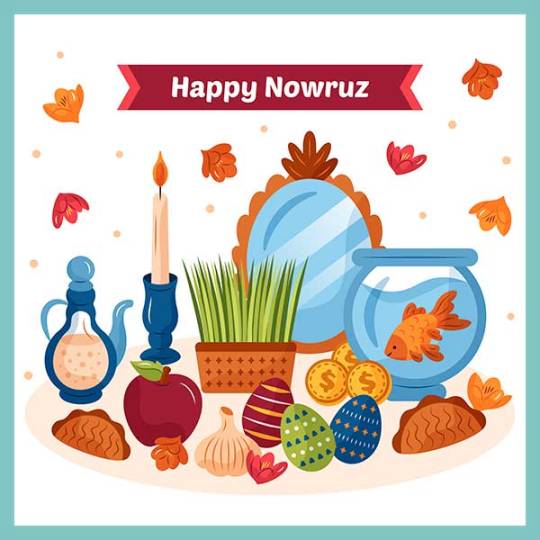
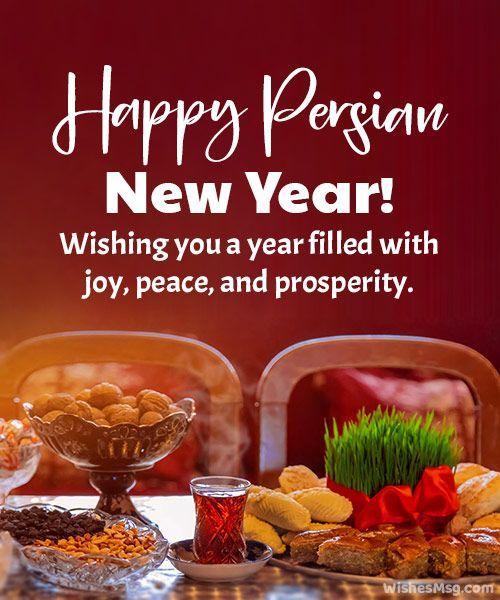
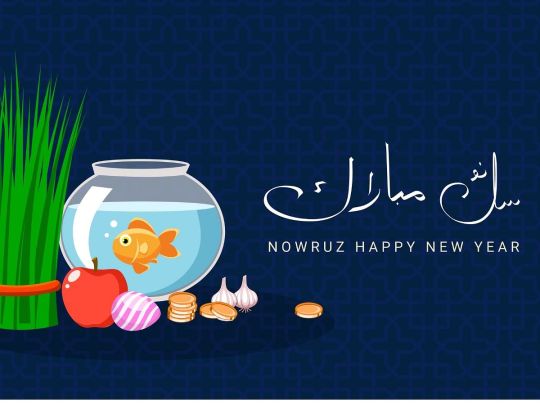
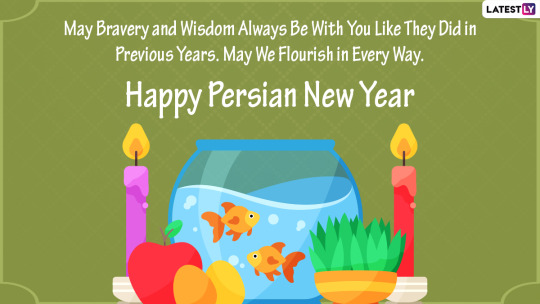


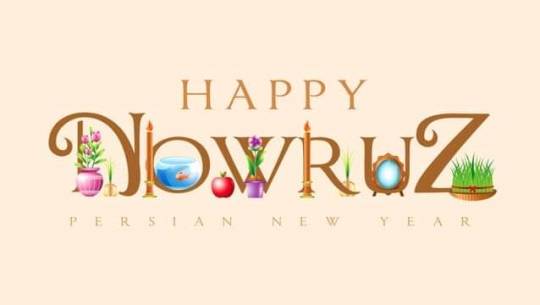
#persiannewyear #nowruz
16 notes
·
View notes
Text

Good Friday and Easter: A Cycle of Death and Rebirth
In the heart of spring, Good Friday and Easter stand as a duo, unified by their contrasts. The silence and sorrow of Good Friday lead us to the joyous celebration of Easter Sunday, a time that celebrates life and hope. These holidays symbolically represent the eternal return, the renewal of life, and the triumph of light over darkness.
From Pagan Spring Rituals to the Christian Festival of Hope: Easter, the focal point of the church year, is closely tied to the resurrection of Christ. Yet, its roots reach deep into history, to times when spring was honored through pagan festivals that celebrated the cycle of death and rebirth in nature. This piece delves into the history and significance of Easter, highlighting how it has evolved over time.
Celebrating Spring Since the Dawn of Humanity: Since prehistoric times, people have marked the arrival of spring with festivities that reflected the cyclical nature of life and themes of death and rebirth. These early celebrations were brimming with vitality, signaling the end of winter and the reawakening of nature.
Transformation Through Christianity: Between Good Friday and Easter As Christianity spread, many of these pre-Christian customs were adapted. The focus shifted to the story of Jesus' crucifixion and resurrection, turning Good Friday and Easter into symbols of death and new life, two sides of the same coin, emphasizing the profound meaning of loss and rebirth.
The Deeper Symbolism: Good Friday, a day of pause and reflection, paves the way for Easter Sunday, a festival of joy and victory. These contrasts illustrate the eternal cycle of life: darkness gives way to light, sorrow to joy, and from death springs new life. These themes are found worldwide in various cultures and religions, reflecting the human longing for renewal and liberation.
The Relevance of Good Friday: In many Christian traditions, Good Friday is a deeply spiritual day, marked by prayer and contemplation. Despite its contrast to the festive Easter, it is an essential part of the Easter tradition, symbolizing the emotional and spiritual journey from darkness to light, from death to new life.
The Cosmic Connection: Interestingly, the period of Good Friday and Easter often coincides with the transition from the Pisces to Aries zodiac signs, forming an intriguing contrast: Pisces represent conclusion and letting go, Aries beginnings, energy, and determination. This astrological phase mirrors the themes of Easter, providing an additional layer of interpretation.
Text supported by Chat GPT-4 Images generated with SD-1.5, overworked with inpainting and composing.
#GoodFriday#Easter#Rebirth#Spring#Christianity#PaganTraditions#Renewal#Hope#Spirituality#CulturalTraditions#AstrologicalSigns#gayart#consolation#comfort
19 notes
·
View notes
Text
Unveiling the Spellbinding Origins of Halloween Shaina Tranquilino October 30, 2023
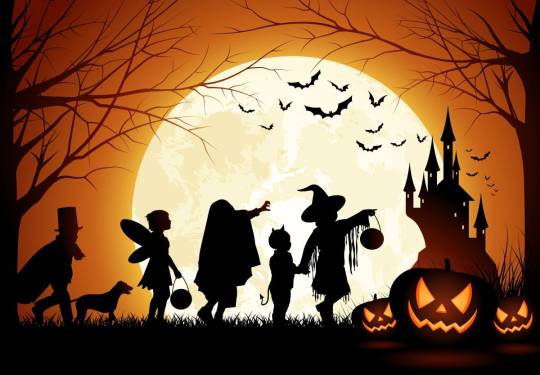
As orange leaves flutter to the ground and jack-o'-lanterns flicker in the night, it's undeniable that Halloween has become a beloved, spine-tingling celebration worldwide. But have you ever wondered about the bewitching origins hiding behind this enchanting holiday? Join us on a captivating journey as we unravel the mysterious history of Halloween.
Ancient Roots: The roots of Halloween can be traced back over 2,000 years to an ancient Celtic festival called Samhain (pronounced sow-in). Celebrated by the Celts in Ireland, Scotland, and parts of Britain, Samhain marked the end of summer and welcomed the harvest season. On October 31st, they believed that the boundary between the living and dead blurred, allowing spirits to roam freely among them.
Trick-or-Treating Takes Shape: During Samhain festivities, people would dress in costumes made from animal hides, attempting to ward off evil spirits or disguise themselves from mischievous entities. They also lit bonfires as a form of protection against malevolent forces—a tradition that still echoes today with our glowing Jack-o'-lanterns.
Christian Influence: In the 9th century A.D., Christianity began spreading throughout Celtic lands. Pope Gregory III designated November 1st as All Saints' Day or All Hallows' Day to honour saints and martyrs who didn't have their own feast day yet. To integrate pagan traditions into Christian practices and discourage Celtic rituals during Samhain, November 1st became known as All Hallows' Eve��the precursor to modern-day Halloween.
Ghostly Evolutions: As time progressed, various customs blended together to shape Halloween into its present form. In Medieval England, "souling" emerged when beggars went door-to-door offering prayers for departed souls in exchange for food or money—a practice that later inspired modern-day trick-or-treating. Similarly, in Scotland and Ireland, "guising" appeared, with people dressing up in costumes to perform songs, poems, or tricks for treats.
The Immigrant Influence: Halloween as we know it today found its way to North America through Irish and Scottish immigrants during the 19th century. In the United States, these traditions merged with Indigenous harvest celebrations and other European customs. The result was a uniquely "American Halloween"—a time of community gatherings, parties, parades, and spooky festivities that captured hearts across the nation.
Modern-Day Celebrations: In recent decades, Halloween has gained immense popularity worldwide. It has evolved into a holiday celebrated by people of all ages—both young and old. Festivities range from creatively carved pumpkins to haunted houses, costume parties to horror movie marathons—all embraced as part of this spirited celebration.
As darkness descends on All Hallows' Eve each year, we're reminded of the fascinating history behind Halloween's enduring magic. From ancient Celtic rituals to religious adaptations and cultural exchanges, this captivating holiday has grown into an enchanting blend of tradition and fun.
So whether you find yourself mesmerized by ghostly tales around a bonfire or joining the chorus of tiny witches and superheroes chanting "trick-or-treat," remember that Halloween is more than just costumes and candy—it's a bewitching journey through time connecting us to centuries-old customs and shared human experiences.
#Halloween#Halloween Origins#Halloween History#Samhain Traditions#Celtic Festivals#Pagan Roots#All Hallows Eve#Ancient Beliefs#Harvest Celebrations#October 31#October#Spooky season#Happy Halloween#Trick or Treat#jack o lantern#spooky#spooky time#hello october#autumm
21 notes
·
View notes
Text
Hundreds of Jewish anti-war demonstrators have been arrested during a Passover seder that doubled as a protest in New York, as they shut down a major thoroughfare to pray for a ceasefire and urge the Senate majority leader, Chuck Schumer, to end US military aid to Israel.
The 300 or so arrests took place on Tuesday night at Grand Army Plaza, on the doorstep of Schumer’s Brooklyn residence, where thousands of mostly Jewish New Yorkers gathered for the seder, a ritual that marked the second night of the holiday celebrated as a festival of freedom by Jews worldwide.
The seder came just before the US Senate resoundingly passed a military package that includes $26bn for Israel.
UN rights chief ‘horrified’ by reports of mass graves at two Gaza hospitals
The protesters called on Schumer – who is among a minority of Democrats to recently criticize the Israeli prime minister, Benjamin Netanyahu – to stop arming Israel’s military, which relies heavily on US weapons, jet fuel and other military equipment.
“We as American Jews will not be used, we will not be complicit and we will not be silent. Judaism is a beautiful, thousands-year-old tradition, and Israel is a 76-year-old colonial apartheid state,” Morgan Bassichis, an organizer with Jewish Voice for Peace, told the crowd.
“This is the Passover that we take our exodus from Zionism. Not in our name. Let Gaza live.”
The mass arrests came after the seder rituals. Speakers included journalist and author Naomi Klein, Palestinian activist Linda Sarsour, and several Jewish students suspended from Columbia University and Barnard College over the protests that have rocked US campuses in recent days.
Rabbi Miriam Grossman, from Brooklyn, led a prayer before the first cup of ritual wine. “We pray for everyone besieged, for everyone facing starvation and mass bombardment.”
Klein spoke after eating the bitter herbs that represent the bitterness of slavery at the seder. “Our Judaism cannot be contained by an ethnostate, for our Judaism is internationalist by its very nature. Our Judaism cannot be protected by the rampaging military of that ethnostate, for all that military does is sow sorrow and reap hatred, including hatred against us as Jews.”
Jewish communities have often used Passover to protest about global injustice. Tuesday’s protest, organizers said, was inspired by the 1969 Freedom Seder, organized by Arthur Waskow on the anniversary of Dr Martin Luther King Jr’s death. The original Freedom Seder sought to connect the Jewish exodus story with the struggle for civil rights in the US and against the war in Vietnam.
One protester, a 31-year-old Jewish woman who asked not to be named for security reasons, said: “Passover is about liberation. In our family, Palestinians have always been part of our celebration and mourning. The call for liberation is more important now than ever … As Americans, the billions of our tax dollars in the Israeli military bill is outrageous and horrifying.”
7 notes
·
View notes
Text
Traveling in festival seasons (Fall edition) 🍁🍂
Dia de Los Muertos
Every autumn, Mexico erupts with joyful celebrations to honor lost loved ones during the time-honored holiday of Día de los Muertos. Far from somber, the festivities invite the deceased to return through vibrant rituals passed down through generations. You'll see the streets come alive with parades of skeletons and skulls, elaborate altars overflowing with marigolds and favorite foods of those departed, and families gathering in cemeteries for overnight vigils. The playful costumes and faces painted like sugar skulls celebrate life and death alike. To fully experience the communal rituals, rich memories, and cultural insights that surround Día de los Muertos, you must immerse yourself in the celebrations. As you reflect on mortality and honor those who came before, you just may leave Mexico with a revived passion for squeezing every drop out of life. Let the uplifting festivities of Día de los Muertos sweep you up on a travel adventure like no other this fall.

Before going Mexico for Día de los Muertos you need to understand their culture and traditions and where are they coming from.
Día de los Muertos, or Day of the Dead, is a multi-day holiday celebrated each year from October 31 to November 2 across Mexico and by people of Mexican heritage worldwide. The holiday originated with the indigenous Aztec and Mesoamerican cultures of Mexico and Central America over 3,000 years ago. When Spanish conquistadors arrived in the region in the 1500s, the rituals of Día de los Muertos merged with the Catholic holidays for All Saints and All Souls Days.
Today, Día de los Muertos is a time for families to honor and celebrate their deceased loved ones. They build elaborate altars called ofrendas overflowing with the favored foods, drinks, photos and possessions of the dead. The holiday is associated with vibrant decorations like marigold flowers and sugar skulls. Families often clean and decorate the graves of lost loved ones, sometimes having overnight candlelight vigils or picnics in the graveyard. Parades and festivals with skeleton costumes, music, dancing and feasts are common public celebrations.
While Día de los Muertos has origins in mourning and remembrance, the mood today is celebratory and festive. The rituals are designed to entice the spirits of deceased family members to return for this special day of reunion. The holiday reminds us to value life and those we love. Día de los Muertos reflects the Mexican view that death is natural - not something to fear, but rather accept as part of life's cycle.

Participating in Dia de los Muertos festival is an incredible opportunity to immerse yourself in Mexican culture and honor the tradition of celebrating life and remembering the departed. Here are some recommendations for what to do during the festival:
Visit Altars: These are set up in homes, cemeteries, or public spaces, overflowing with marigolds, candles, skulls, photos, and the favorite foods and belongings of deceased loved ones. Observing them provides deep insight into the customs. Each altar is unique and offers a glimpse into the lives of those being remembered. Respectfully observe the offerings and take in the stories behind them.
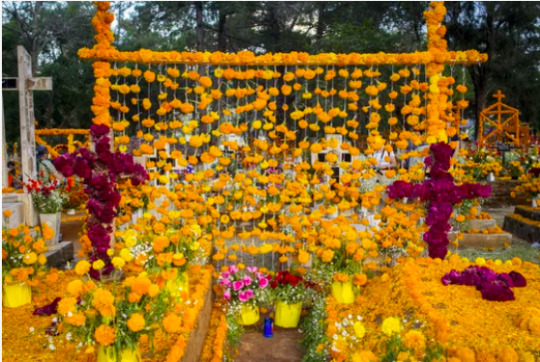
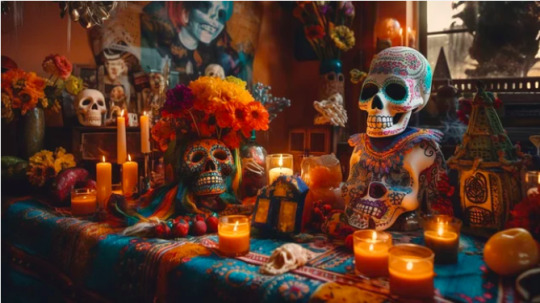
Attend a candlelight vigil - Many families hold all-night vigils in cemeteries, decorating graves with marigolds and keeping candles lit to guide the spirits. Witnessing this intimate tradition is moving- Many families hold all-night vigils in cemeteries, decorating graves with marigolds and keeping candles lit to guide the spirits. Witnessing this intimate tradition is moving
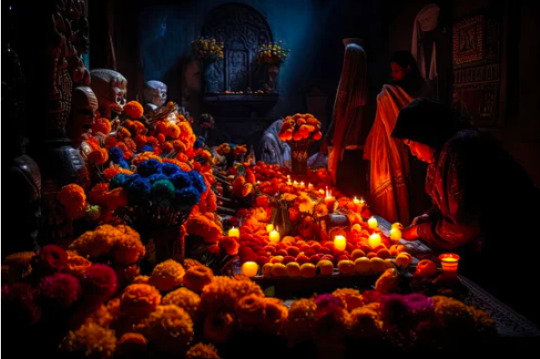
Witness Parades and Processions: Many towns and cities host lively parades filled with vibrant costumes, music, dancing, and people painted as calaveras (skulls). These parades are a joyful way to celebrate the spirits' return.

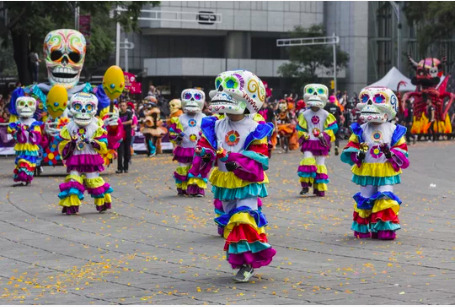


Enjoy Traditional Foods: Indulge in the delicious traditional foods associated with Dia de los Muertos, such as pan de muerto (sweet bread), chocolate caliente, sugar skulls, tamales, atole (a warm beverage), and more.

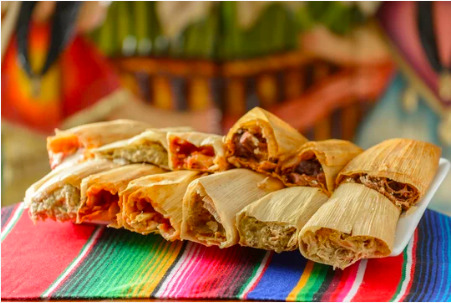

Learn about La Catrina: Discover the history and significance of La Catrina, the iconic elegantly dressed skeleton figure.
La Catrina became an iconic Día de los Muertos symbol due to her origins in José Guadalupe Posada's satirical 1910 etching of an elegant female skeleton, poking fun at indigenous Mexicans imitating upper class fashions. Her name blended European and native words, while her outfit blended styles, representing Mexico's mixed origins. Artist Diego Rivera later popularized La Catrina as a national symbol in his murals. Her playful yet philosophical representation of death as a natural part of life, instead of something to fear, resonated deeply. Today La Catrina appears everywhere during Day of the Dead celebrations, from artwork to costumes. She is the quintessential folkloric embodiment of Mexican identity and attitudes towards death.
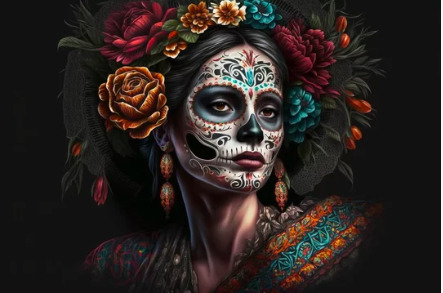

Engage in Face Painting: If you're comfortable, consider getting your face painted with calavera makeup. It's a fun and artistic way to join in the spirit of the celebration.


Overall, Dia de los Muertos is a celebration of life, memory, and the unity of people across generations. Engaging in the festivities with respect and an open heart can provide you with a transformative and culturally enriching experience.
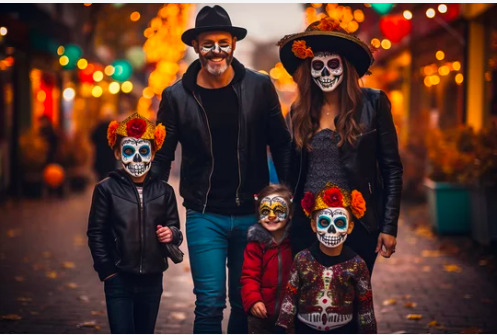
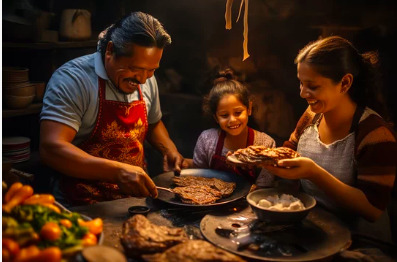
#travel blog#traveling#travel tips#travel#travel photography#travelling#tourism#mexico#day of the dead#dia de los muertos#festival#mexican#festivewear#la catrina#Skeletons#places to visit#skulls#culture#traditions#autumn
24 notes
·
View notes
Text
Chinese New Year: A Global Festival Beyond Asia
Every year, when the first new moon of the lunar calendar begins to wax, a wave of red lanterns, firecrackers, and jubilant parades sweeps over not just Asia but cast its crimson glow across the world. Chinese New Year, also known as Lunar New Year or Spring Festival, is a vibrant and soulful celebration deeply ingrained in Chinese culture and heritage, yet its grandeur resonates with millions globally. Let's embark on a fascinating journey to witness how this majestic festival paints the town red, all around the planet!
The Universal Appeal of Tradition
Tradition doesn't just reside within geographic boundaries; it transcends them. Chinese New Year is a testament to this as communities from Sydney to San Francisco, London to Lagos, come together to embrace the spirit of renewal, hope, and prosperity that the festival signifies. It's a time when the ancient rituals and colorful folklore of the East blend seamlessly with the diverse cultures and modern vibes of cities around the world.
Celebrations Around the Globe
Imagine the thunderous beats of drums and the sharp clack of clashing cymbals; feel the exhilaration as the Dragon Dance snakes its way through the bustling streets of Chinatowns everywhere! From Asia to the farthest reaches of the West, these iconic traditions have found a home, bringing with them a splash of culture and an invitation to communal feasting and reflection.
In Malaysia and Singapore, the streets come alive with decorations and performances, while families gather for the "reunion dinner," embracing the core values of family and community. Meanwhile, in the heart of London, a mesmerizing parade draws thousands, witnessing a fusion of English and Chinese festivities.
Across the Pacific, North America holds its own with cities like New York, Vancouver, and San Francisco hosting grand events - their Chinatowns pulsating with life and festivity, transforming the environs into a microcosm of the East.
A Time for Renewal and Prosperity
As we ring in the New Year with good food and vibrant celebrations, let’s not forget the underlying promise of a fresh start. This is a time to sweep away any ill-fortune and welcome incoming good luck with open arms and hearts full of ambition.
Delving into Diverse Practices
While the essence of Chinese New Year remains constant, local flavors and customs lend each celebration its own unique twist. In Indonesia, it's a national holiday reflective of the country's recognition of cultural diversity. The Philippines, with its considerable Chinese population, revels in street parties and sumptuous feasts celebrating both cultural harmony and delicious gastronomy!
Embracing the Future
As we joyously participate in these world celebrations, let us also remember the profound lessons they impart. These global festivities of Chinese New Year highlight the beauty of cultural exchange and the power of tradition to unite different peoples under the banner of shared celebration. The ubiquity of the festival underscores the universal themes of hope, resurgence, and the communal joy of ushering in better days.
Conclusion
As the brilliant fireworks dissolve into the night sky the world over, Chinese New Year stands as a glistening reminder that joy, much like the full moon, is round and complete when shared. So, no matter where you find yourself when the next Chinese New Year dawns, remember that you're part of a worldwide cadre who's celebrating not just a tradition rooted in time, but the ever-growing tree of human connection. Here's to a New Year filled with happiness, health, and prosperity. Oh, and don't forget to share your festivities with us. Tag us, and let's paint social media red with the splendor of Chinese New Year - together!
Remember, it's not just a festival; it's a global phenomenon that underscores our unity as a global village, festively tied with the reddest of strings. Join in the revelry, indulge in the spirit, and experience the magnificence that is Chinese New Year, wherever you may be. Gung Hay Fat Choy!
#Chinese New Year: A Global Festival Beyond Asia#thekchen choling#chinese new year almanac#chinese new year
2 notes
·
View notes
Text
Apple Magic; How to use Apples in Witchcraft
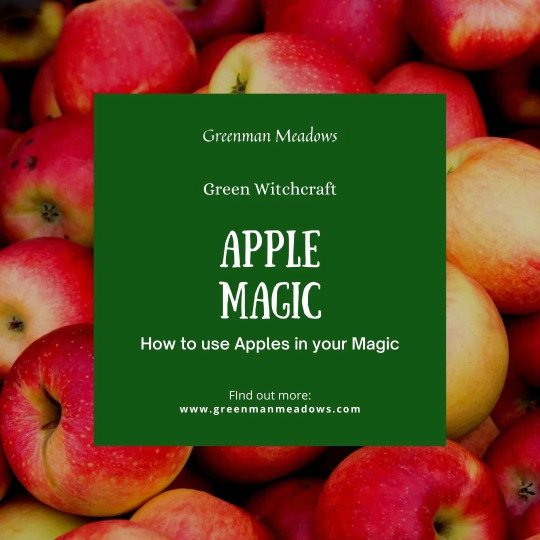
From the story of Johnny Appleseed to a certain princess taking a bite of a poisoned apple; apples are involved in many stories, especially as magical tools or enchantments. Bobbing for apples, peeling the apple and tossing the skin to reveal the name of your lover, these are just some of many ways apples are used in magic! With Mabon approaching, now is the perfect time to talk about apples and their uses so as part of our Herbal Witchcraft, here’s some info about Apples and how to use them in witchcraft.
A is for Apple
Basically everyone knows what an apple is! Round, sweet or tart, commonly harvested in fall, and used for a variety fo dishes and drinks!
Apples(or Malus Domesticas) are part of the Roseacea family, with other members such as roses, pears, cherries, plums and strawberries. Grown worldwide, apples have 7,500 varieties!
Apples are made up of 4 parts. The skin and pulp are the most commonly used parts, making up the majority of the fruit. The stem and seeds can be ingested but are typically disposed of or recycled. (A great way to recycle the skins and seeds is to make apple cider vinegar!)
The tree of an apple goes through 4 stages before the fruit is ready to harvest. In early spring, the tree is covered in small green buds, waiting to open into flowers. Apple Blossoms are small and sweet smelling, typically pink or white in color. Once pollinated, the blossoms drop off and the tree begins to grow small green nubs that will turn into apples. Once the apples are ready and have changed colors(unless they’re a green apple) they can be harvested! This typically happens in September-October for the best sweetness.
There are tons of recipes on using apples from savory to sweet. Fall-time features many of these dishes due to the harvest. Put a spin on a classic apple dish by using kitchen magic to infuse your dishes with magic!
So how do we use apples in magic?
Apple Magic
Apples feature heavily in love magics. A sweet and often red fruit, its perfect for building a crush or relationship into a strong loving relationship.
Apples also have several spot in magic including things like, luck and prosperity magics, creativity, fertility ,magics and several stories of opening gates to the underworld or otherworld.
All parts of the apple and apple tree can be used in magic. From the blossoms to the bark and fruits there’s a use for basically every part.
In fact my very first wand was made from the branch of an apple tree, as are my rune stones! I save apple seeds for spell jars on love, self love, creativity and prosperity spells.
Apples are a feminine energy and are connected to deities such as Hera, Aphrodite, Gaia and Rhiannon.
Apples are connected to witches and wicca because when you cut an apple in half width wise, the pips or seeds form a star. a 5 pointed start forms part of the pentacle which is used worldwide by many witches and pagans.
Burying 13 apples leaves in the garden after harvest is said to ensure a bountiful harvest the following year.
Finding a Silver Bough, or an apple tree with buds, blossoms, unripe and ripened apples all at the same time; was said to be the entrance to the Land of Faerie, specifically the Isle of Apples, home of The Faerie Queen Morgan Le Fay.
For more ideas and craft tutorials, Check out our Pinterest Board on Green Witchcraft!
Apples(and Apple Magic) in Wiccan Holidays
Apples ripen in the Fall and consequently are featured heavily during the Harvest Festivals. Mabon and Samhain focus heavily on apples and apple dishes, as well as crafts and activities.
Bobbing for apples is a Fall party activity that started out as a courting ritual and race. Names would be marked onto apples and each suitor had 3 chances to grab the apple of their intended. If after 3 times they did not succeed, superstition said their relationship would fail! In the 1800’s the game had fallen away except for parts of Ireland and England. By the end of the century, American colonists brought back apple bobbing as just a game, to be enjoyed by both children and adults.
Here We go a Wassailing
Wassailing was the pagan version of caroling. Typically done during Twelveth Night, people would go from house to house, or to the town orchard. There they would sing songs and request a drink of cider before moving onto the next place to spread cheer. For orchard Wassailing, cider and other offerings were poured out and given to the trees, to give offerings for a strong harvest the next year.
Mabon sees an increase in crafts and magics. Creating apple dishes to bring in love and abundance to the home are probably the most common. Some Mabon crafts you can try is making your own cider,creating an apple candle, and drying apple slices for a natural garland or wreath.
Samhain also features apples. As the veil between the worlds thins, apples and pomegranates are left as offerings for the dead! Some versions involve making a meal and including it in your dummy supper; while others involves burying the apples for the spirits to receive them easier. No matter how you decide to do it, apples make for a good offering to the spirits and deities in fall.( For more info on dumb or dummy suppers check out my 4 part post on Samhain, available here!)
Apples in Mythology
There are quite a few stories involving apples. Most famously known is the Apple of Knowledge in the garden of Eden.
Other stories include:
The Apple of Discord:
The apple that started the Trojan war. When an apple was sent into a party labeled “For the Fairest” 3 goddesses(Athena, Aphrodite and Hera) fought for the title. When the human Paris chose Aphrodite in exchange for the love of Helen of Troy the most beautiful woman in the world, the other 2 were enraged. With the abduction of Helen, started the Trojan war which went on to last 10 years!
Hercules and Atlas, the 11th task:
As part of Hercules 12 labors, he was instructed to enter the garden of Hesperides and take a golden apple from the dragon and the 3 daughters of Atlas. Part of this story involves Hercules taking the world onto his shoulders to get Atlas’s help and then tricking him to take the world back. This completes the 11th of 12 labors required of Hercules.
Atalanta and the foot race
Another Greek myth, Atalanta was a huntress abandoned on a mountain because her father desired a son. She survived and grew to be a mighty warrior and devotee of Artemis.
When she returned to her father as an adult, she swore she would never wed a man unless he could beat her in a foot race(and those who lost would be put to death). Being the best racer, she beat many suitors with ease.
A man by the name of Hippomenes, smitten by her beauty, sought help from Aphrodite. Annoyed that Atalanta was a follower of Artemis and not herself, she gave him 3 irresistible gold apples.
During the race, he threw them at various points, giving him enough time to get ahead and win the race due to Atalanta having no choice but to stop and chase after the shiny apples.
Idun and Loki
To change it up from all the Greek Myths, there’s also Norse stories to tell!
Idun is the keeper of apples in Norse Mythology. Much like the Apple of Eden, there’s nothing that says that apples were specifically the fruit mentioned but it is the most commonly mentioned fruit when the stories are told.
Idun was one of the more important goddesses of Norse Mythology. As keeper for the fruit she controlled the immortality of the gods, for if they did no eat of her fruit, they began to age and weaken.
Loki,being a trickster god, was asked to help the giant Thjazi capture Idun so he could marry her. Loki told Idun of a new and undiscovered fruit outside of the walls of Asgard. She went with him to see this fruit and was immediately captured by Thjazi and taken to his Mountain home.
Some time after her capture, the other gods because to feel the effects of her loss,turning grey and wrinkled and becoming weak. They found out that she was last seen with Loki and after many threats of much pain, he eventually confessed to helping Thjazi with her capture.
With Freya’s help, Loki transformed into a falcon and flew to Jotenheim in search of Idun. He happened to find her unattended as Thjazi was out at sea fishing. Loki transformed her into a nut and quickly returned to Asgard.
Thjazi was furious upon learning he had be deceived and immediately set off after them. The other gods at Asgard created a boundary of kindling which as soon as Loki and Idun made it past, was set on fire. Thjazi flew into the flames and perished.
I wish I had time to tell you all the stories!
There are so many stories that deal with apples(including Avalon/King Arthur and the Underworld)! But these are some of my favorites. To wrap up this post, I’m going to share my Apple Properties list and then you’re golden!(a golden apple that is ha!)
Apple Magic Properties chart
Apple
Latin Name: Malus Domestica Folk Names: The Silver Bough, Tree of Love, Fruit of the Underworld Gender:Feminine Element:Water Planet:Venus Deities:Gaia, Hera, Aphrodite, Dionysis, Rhiannon Crystals: Rose Quartz, Amethyst, Morganite, Aquamarine Magical Properties: Love, Immortality, Luck, Prosperity, Hidden Knowledge, Divination, Opening Gateways, Abundance, Longevity,Creativity, Fertility Uses: Love spells, Healing Spells, Dream Sachets, Home wreaths and garlands, Divination Tea, Wands and Runes, Garden offerings, Carved dried apple faces
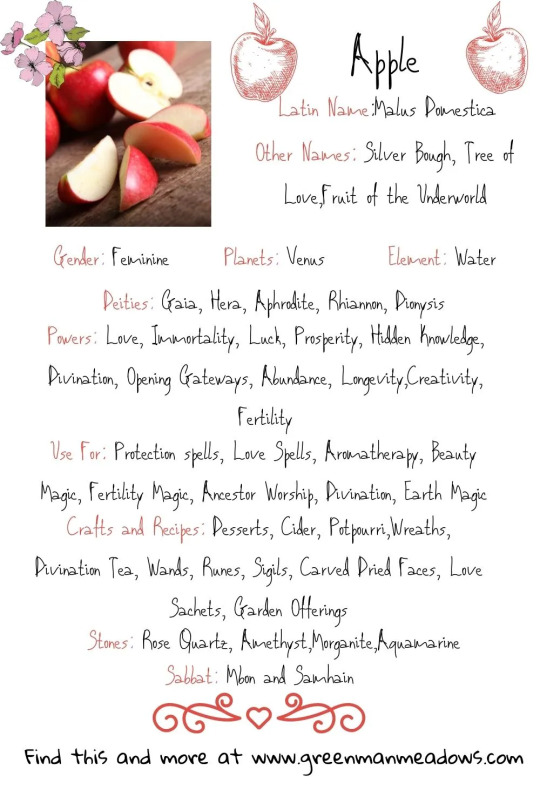
An Apple a day won’t keep the Witch Away!
I hope you found something interesting about Apples and their history in Witchcraft.Feel free to save my Apple Magic Graphic for your Book of Shadows or Grimoire. Check out our Pinterest Board for ideas and recipes on how to use apples for magic and kitchen witchcraft!
3 notes
·
View notes
Text
Holiday

Holiday Holidays are an integral part of human culture. They are organized to honor cultural values, traditions, history, and religion. However, the origins and emergence of festivals are a complex and diverse story around the world.
The origins of festivals can be found in ancient cultures. In ancient times, people often organized festivals to honor gods, legendary figures, and important events in history. These festivals were often organized in cycles and had a religious nature, so they were usually associated with religious sites such as temples, pagodas, and churches.
However, over time, festivals have become more diverse and have undergone many changes to fit different situations. For example, in Europe, festivals became popular in the Middle Ages when kings organized events to honor warriors and armies. Meanwhile, in Asia, festivals are often related to plant seasons and harvests, and are organized to honor agricultural deities.
As a result, festivals have become an indispensable part of the culture of countries around the world. Festivals are organized to honor the cultural values and traditions of different ethnic groups, while also providing opportunities for tourism, exchange, and learning about the cultures of others.
Popular festivals such as the Carnival in Brazil, La Tomatina in Spain, or the Harbin Ice and Snow Sculpture Festival in China all have their own origins and emergence. Therefore, when participating in these festivals, you will have the opportunity to experience and understand more about the history, culture, and traditions of the country and its local people.
In addition, festivals also play an important role in introducing and promoting tourism for localities. Festivals often attract a large number of tourists to participate, contributing to the local economy, while also helping to raise awareness about the culture and traditions of different countries.
However, it is important to note that festivals can also cause some issues such as significantly increasing the amount of waste, traffic congestion and noise, affecting the living environment of the local community. Therefore, organizing festivals needs to be done sustainably, ensuring the minimization of negative impacts on the environment and community.
In summary, the origins and emergence of festivals have roots in the history and culture of humanity. They not only honor cultural values and traditions, but also make important contributions to the local economy and cultural exchange between countries worldwide. However, organizing festivals needs to be done sustainably to reduce negative impacts on the environment and community.
Christmas Christmas is celebrated to commemorate the birth of Jesus Christ on December 25. However, the origin of the holiday is still a topic of debate.
There are several theories about the origin of Christmas. One theory is that it may be related to the winter solstice (also known as Yule) in the ancient Roman calendar. This day was also celebrated with festivals and rituals by the Vikings and ancient Germans, and was incorporated into the Roman Catholic calendar in the fourth century.
Another theory is that December 25 was chosen as the date to commemorate Jesus’ birth to replace the winter solstice festivals held in ancient Greece.
Finally, another theory suggests that December 25 was chosen because it was the day that Jesus was elevated to the position of king, with a crown placed on his head in Constantinople (now Istanbul, Turkey) in 800 AD.
Regardless of the exact reason, Christmas is still an important holiday and tradition in many countries around the world, celebrated with religious ceremonies and fun entertainment activities.
Santa Claus Santa Claus is a familiar character to people all over the world, especially in Western countries. He is a symbol of Christmas and is believed to bring gifts to children on Christmas Eve.
However, Santa Claus is not a real historical figure, but rather a legend that has been passed down through generations. It is believed that Santa Claus was inspired by a real person, Saint Nicholas, a fourth-century bishop who lived in Turkey. Saint Nicholas was known for his compassion and generosity, often helping the poor and children.
During that time, Orthodox churches held celebrations on December 6th to honor Saint Nicholas. However, due to changes in history and culture, this celebration was moved to December 25th – Christmas Day. From then on, Saint Nicholas became a symbol of Christmas and was known by different names such as Father Christmas, Kris Kringle, or Santa Claus.
Santa Claus is depicted as a plump, bearded old man wearing glasses, usually dressed in a bright red suit. He drives a sleigh with accompanying reindeer and carries a bag of gifts. According to tradition, on Christmas Eve, Santa Claus visits each house to place presents for children in the gift bag. In Western countries, it is also a common tradition to place shoes on the fireplace on Christmas Eve to await Santa Claus.
However, many people believe that Santa Claus is not just a character in folklore but also represents love, unity, and joy of the Christmas season. Every year, Santa Claus’ image appears on a variety of decorations, books, and movies related to Christmas, becoming a cultural symbol representing this festive season.
One of the most popular traditions of Santa Claus is the act of giving gifts to children on Christmas Eve. Many people believe that giving gifts during Christmas is not only to make children happy but also to honor hope and faith in the future. Santa Claus is also seen as a symbol of generosity and love, always ready to help those who are in need.
In addition, Santa Claus has been featured in many works of art and literature, especially in stories and movies for children. One of the most famous works about Santa Claus is “The Night Before Christmas” by Clement Clarke Moore, in which Santa Claus is described as a cheerful, affectionate, and generous character.
However, as with any character in folklore, there are many different versions of Santa Claus. In some places, he is described as a different character, with different costumes or characteristics. For example, in some places, he is called “Papa Noel” and wears a blue cloak. However, no matter how different he may appear, Santa Claus’s love and generosity are always the core values of him.
In recent years, Santa Claus has become an indispensable part of the Christmas season and an important cultural icon. Anyone can find meaning and feel the love and hope represented by Santa Claus during this festive season.
The Grinch The Grinch is a well-known fictional character from the fairy tale “How the Grinch Stole Christmas!” by Dr. Seuss. This character is described as a sky-blue monster with a yellow beard and sparkling yellow eyes. He is often seen as a symbol of discontent and dissatisfaction, and is known to be a mentally troubled and reclusive figure.
Living alone in a cold, isolated house on top of a mountain, The Grinch has no friends, no family, and is frequently lonely. He always feels abandoned and believes that he has no place in society. Consequently, The Grinch feels incredibly annoyed and resentful towards the citizens of Whoville, who are always smiling and cheerful during the Christmas season.
As a result, The Grinch decides to steal Christmas from the people of Whoville to demonstrate his opposition to their actions and thoughts. However, as we know, The Grinch’s plan fails when he realizes that Christmas is not about receiving gifts or waiting for Santa Claus, but about love, sharing, and connecting with loved ones.
The Grinch is a character with complex personality traits. He always feels isolated and unaccepted in society, and as a result, he can be stubborn and sometimes has a bad attitude. However, when he is shown love and care, he becomes compassionate and learns to forgive. This character is a testament to the fact that no matter how closed off or lonely we may feel, love and care will always help us overcome difficulties and feel happiness.
After failing to steal Christmas from the town of Whoville, the Grinch realizes that love and care from others are far more important than any material possessions. He changes his thinking and actions, starting to care for and nurture those around him.
The Grinch has become a symbol of change and forgiveness. His actions have ignited faith in humanity, sharing, and compassion. Dr. Seuss’s “How the Grinch Stole Christmas!” has become one of the most famous literary works about Christmas, and the Grinch has become a beloved character for many generations of children.
The Grinch is a deeply meaningful character, bringing a message of love, sharing, and connection between human beings. This character has helped us realize that, no matter how lonely or unaccepted we may feel, love and care still exist and will help us overcome any difficulties in life.
The Grinch is a testament to the fact that within each of us exists a sacred piece, and if we know how to explore and express that piece, we can become good people and contribute positively to society.
Halloween Halloween is an annual festival celebrated on October 31st. But where does Halloween originate from? Why has it become one of the biggest festivals of the year? In this article, we will explore the origins of Halloween.
It is believed that Halloween originated from an ancient festival of the Celts (a tribe that lived in the area that is now Ireland, England, and Northern France) called Samhain. This festival was held on November 1st and was considered a day that marked the transition from autumn to winter. During this festival, the Celts believed that the souls of the dead would return to the world of the living on Halloween night, bringing with them strange and frightening occurrences.
When Christianity spread to the Celtic region in the 5th century, a new festival was created to replace Samhain. This festival was called All Saints’ Day or All Hallows, and it was celebrated on November 1st to commemorate the saints and the souls of the departed. The night before, the Christian community held a festival called All Hallows Eve, which later became abbreviated to Halloween.
Later, when Europeans came to America, they brought Halloween with them and made some changes. For example, Americans added their own characteristic games and activities such as making Halloween cookies and decorating their homes with scary things. This festival became part of American culture and is widely celebrated across the country.
In summary, Halloween originated from the Celtic festival of Samhain and was transformed into a Christian festival in the 5th century. Later, when Europeans came to America, they brought Halloween with them and made some changes to adapt to their culture. Today, Halloween has become one of the biggest festivals of the year in America and is celebrated by both children and adults.
On Halloween day, people often dress up in scary and spooky costumes and go out on the streets to participate in typical festival activities such as trick-or-treating at neighboring houses or joining Halloween cake decoration contests. Additionally, people also organize Halloween parties and watch horror movies to enhance the spooky atmosphere of the festival.
However, there are also some people who dislike Halloween because they believe that the festival has a higher moral and religious tone. They think that dressing up in scary costumes, decorating houses with scary objects, and participating in spooky activities can increase the fear and anxiety of children. This is also one of the reasons why the Halloween festival still encounters controversy and opposition in some communities.
Nevertheless, it cannot be denied that Halloween is a part of American culture and is loved by many people around the world. It is an occasion to discuss moral and religious issues and also an opportunity to participate in activities and create memorable moments with family and friends.
Jack Skeleton Jack Skeleton is one of the most famous characters in the classic animated film “The Nightmare Before Christmas” by Walt Disney Pictures. This fictional character is depicted as a skeleton, a dead human, with a fascinating and mischievous personality.
Jack is a unique character, not only because of his eccentric appearance, but also because of his personality. He is a talented and creative individual with a passion for art. Jack always seeks out new and strange things, and often leads adventures to explore the world.
Despite his friendly and affectionate nature towards others, Jack is also very curious and tends to be reckless. This leads to many humorous and disastrous situations in his life, and often puts him in dangerous situations.
However, Jack Skeleton also has a dark side, another aspect of his personality. He always feels dissatisfied with his life and constantly seeks change. This leads him to devise a complicated plan to change Christmas, a holiday he does not understand nor like.
With the help of other characters in the film, Jack Skeleton eventually understands the value of Christmas and decides to return to his role in the holiday. This shows that Jack Skeleton is not only an interesting and talented character, but also a character with positive change in his life.
In summary, Jack Skellington is a very special and interesting character in the animated film “The Nightmare Before Christmas”. With his curious, daring, and creative personality, he has inspired many audiences and become an icon of innovation and adventure.
Although he is a creepy character, Jack Skellington has a cute and adorable appearance with his black bow tie and black and white vest. However, this exterior image conceals his full talent and emotional nature.
Moreover, Jack Skellington is a highly influential character in popular culture. He has appeared in many toys, costumes, and graphics, and has become one of the icons of Halloween and Christmas. His famous quotes, such as “What’s this?” and “Just because I cannot see it, doesn’t mean I can’t believe it.” have also become classic lines that many people quote and refer to.
In reality, Jack Skeleton has become an icon for creativity and change in life. He has shown us that even in difficult situations or ups and downs in life, we can still find ways to change and move forward.
With all of his unique traits and influence, Jack Skeleton is truly a lovable and memorable character in the world of animation. Perhaps, he will continue to inspire generations of audiences in the future, and become an eternal symbol of creativity and innovation.
Michael Myers Michael Myers is one of the most infamous horror characters in film history, created by director John Carpenter in the 1978 movie “Halloween”. He is a serial killer who has murdered many people in his family and friends, and has become an icon in the horror genre.
Michael Myers is portrayed as a cold-blooded, emotionless murderer who shows no signs of fear or shame. He always wears a white protective suit and a childlike mask with deep black eyes and a chilling gaze. Since he was young, Michael has shown signs of cruelty and violence, and one Halloween night, he killed his older sister and was sent to an orphanage.
After escaping from the orphanage, Michael returns to his hometown of Haddonfield, Illinois, where he was born, and begins his killing spree. In most of the Michael Myers films, he is portrayed as a ruthless predator, preying on the fear and trauma of his victims to chase and kill them.
Despite being a terrifying and haunting character, Michael Myers has also become a notable cultural icon. The films about him have become classic works in the horror genre, and his image has been widely used in other products such as comics, books, and video games.
Michael Myers is considered one of the scariest and most famous serial killers in film history. His brutality and violence have influenced many filmmakers and authors in the horror genre. If you are a fan of horror movies, you surely know Michael Myers, and he remains one of the most beloved and terrifying characters in the world of cinema. Despite there being many films about him, Michael Myers still holds the audience’s interest. And that’s not just because of his brutality and terror, but also because of his successful portrayal and characterization.
One of the important factors that contribute to the allure of Michael Myers is his white protective suit and mask. The white suit, similar to the uniform of security guards in psychiatric hospitals, creates a sense of unity between Michael and those employees, making it seem like he’s a part of the system. Meanwhile, his child-like mask creates a surprise and horror for victims who cannot know what Michael is thinking or doing behind that mask.
The silence of Michael Myers also contributes to his appeal as a character. He never speaks, never reacts to what others say or do. This creates a stark contrast with other serial killers in films, who often have cunning speeches or dramatic reactions when confronted with their victims.
However, Michael Myers’ appeal is not only due to his characterization and acting, but also to his portrayal as an unstoppable force. In many situations, Michael has been defeated, bound, and even shot dead. Yet in all these cases, he returns or reappears mysteriously. This creates suspense, curiosity, and a sense of haunting for the audience, as they wonder if he can be defeated completely or not.
Michael Myers’ appeal is also created by the reason he became a serial killer. In the first Halloween film, he was a six-year-old boy imprisoned in a mental institution after killing his older sister. After escaping and returning to the town of Haddonfield, he continued to brutally kill people without a clear motive. The lack of a clear motive for Michael Myers’ actions creates a sense of fear and unpredictability.
In summary, Michael Myers’ appeal lies in his silence, portrayal as an unstoppable force, and lack of clear motive for his actions. These elements create a sense of suspense, haunting, and fear for the audience, making him one of the most iconic horror characters in film history.
However, Michael Myers is not a character completely devoid of emotion. In many films, he shows a special concern for his younger sister, Laurie Strode. This creates a complex interplay between his brutality and empathy, adding a nuanced dimension to his character.
Overall, Michael Myers is one of the most beloved horror characters in the world of cinema thanks to his successful portrayal and character design, his unbeatable nature, and the chilling feeling he creates. However, to achieve this level of appeal, it requires the complexity and creativity of filmmakers to create such a frightening and powerful character like Michael Myers.
ST PATRICK’S DAY St. Patrick is one of the most revered saints in Ireland. He is a famous missionary and is considered the founder of Christianity in Ireland. Every year on March 17th, people around the world celebrate St. Patrick’s Day to honor him.
St. Patrick was born around 385 in Scotland. When he was 16 years old, he was captured and sold into slavery to a family in Ireland. He worked hard for six years, but during that time, he learned a lot about the culture and religion of Ireland.After escaping slavery, St. Patrick returned to Scotland and became a Christian. He then went back to Ireland and preached Christianity to the people there. He established many churches and became an important figure in Irish history.
One of the most iconic symbols of St. Patrick’s Day is the shamrock. According to legend, St. Patrick used this plant to explain the concept of the Holy Trinity to the people of Ireland. The three leaves of the shamrock represent the Father, the Son, and the Holy Spirit in the Christian religion.
Today, St. Patrick’s Day has become an important holiday celebrated around the world. People organize parades and wear green outfits, the color of the Irish flag. Many restaurants and bars also hold events to commemorate the day.
However, beyond the festivities and feasting, St. Patrick’s Day also holds a significant meaning in honoring a man who dedicated his life to spreading the Christian faith to the people of Ireland. It is also an occasion to organize fundraising activities and support charitable organizations to help those in need.
One of the distinctive features of St. Patrick’s Day is the sense of unity and pride among the Irish people. This day is considered an opportunity for people of Irish descent to celebrate their heritage and culture and share the joy of the festival in a festive and exciting atmosphere.
In addition, St. Patrick’s Day has also become an opportunity for the world to learn about and appreciate the culture and history of Ireland. Activities and events related to the festival are organized all over the world, attracting many tourists to participate.
However, it is important to note that with the development of the festival, issues related to safety and ethics have also been raised. Many people often drink excessively and cause accidents or conflicts. Therefore, participating in the festival should be done responsibly and with caution.
Overall, St. Patrick’s Day is an occasion to honor an important figure in Irish history, as well as to connect and unite those who love the culture and traditions of this country. It is also an opportunity to educate and share ethical values with the community.
St. Patrick’s Day is celebrated not only in Ireland but also around the world, particularly in communities of Irish people and those of Irish descent in other countries. This day is often marked with fun and colorful activities, such as welcoming tourists, parades, games, and artistic events, especially those related to the traditional color of green, which is significant to the Irish people.
In summary, St. Patrick’s Day is an important holiday to commemorate the culture and traditions of the Irish people, and it is an occasion for Irish people and those who love this country to gather, have fun, and welcome the new spring season.
LEPRECHAUN Leprechauns are one of the legendary figures of Ireland. They are described as tiny, fairy-like creatures standing about 30 cm tall, living in the forests and meadows of the Emerald Isle.
Leprechauns are believed to have a rather peculiar personality, being quite cantankerous and protective of their treasures. They are often depicted wearing fur coats, leather shoes, and a hat made of shamrocks, and always carrying a pouch of gold coins. If someone happens to catch a Leprechaun, they must promise to release them, in order to avoid the curse of these mischievous creatures.
According to legend, Leprechauns are masterful at forging gold coins, and they have kept the secret of this craft for centuries. Some people believe that if you find a Leprechaun and demand their gold coins, you will be cursed forever.
Leprechauns are also known as a symbol of Ireland’s Saint Patrick’s Day celebration. On this day, it is believed that if you wear a green outfit and find a Leprechaun, you will have good luck for the entire year.
The legends of Leprechauns have been around for centuries, passed down through generations. Their stories have become an integral part of Irish folklore and have been incorporated into many works of literature and film.
Although there is no scientific evidence to prove the existence of Leprechauns, they remain an important part of Ireland’s tradition and culture. They are considered to be part of a world of imagination, where mystical and magical creatures can exist and survive to this day.
The shamrock The shamrock plant is commonly found in grasslands and forests throughout Europe. It is called “shamrock” because the word originates from the Gaelic language “seamróg,” meaning “little clover.” The leaves of the shamrock are very similar to those of other clover plants, but the shamrock has three leaves instead of the typical four.
The shamrock has become an essential part of Irish culture because of its special importance in the country’s history and traditions. According to legend, the explorer St. Patrick used the shamrock plant to explain the concept of the Holy Trinity to the people of Ireland. He believed that the three leaves of the shamrock represented the Father, Son, and Holy Spirit, and that they were combined to create a unified entity.
Today, the shamrock remains a beloved symbol of Ireland and is often used to represent the country and its culture. It is a reminder of the country’s rich history and traditions and serves as a unifying symbol for the Irish people around the world.
From there, the shamrock has become a symbol of unity and harmony in Irish culture. It is also widely used in traditional festivals and ceremonies of the country, especially on St. Patrick’s Day on March 17th each year. On this day, Irish people wear a shamrock on their chest and use it as part of their traditional attire.
Additionally, the shamrock plant is also used in traditional Irish medicine as a medicinal herb. Researchers have found that shamrock contains a compound called oxalic acid, which can help reduce pain and heal wounds. It is also used to treat liver and digestive disorders.
In summary, the shamrock is an important symbol of the culture and history of Ireland, representing unity and harmony in the country. It is not only used on St. Patrick’s Day but also in many other traditional activities and events of the country.
Since then, the shamrock has become a symbol of unity and harmony in Irish culture. It is widely used in festivals and traditional ceremonies of the country, especially on St. Patrick’s Day on March 17th each year. On this day, Irish people wear a shamrock on their chest and use it as part of their traditional clothing.
Furthermore, the shamrock plant is also used in traditional Irish medicine as a remedy for various ailments. Researchers have found that shamrocks contain a compound called oxalic acid, which can help relieve pain and heal wounds. It is also used to treat liver and digestive disorders.
In summary, the shamrock is an important symbol of Irish culture and history, representing unity and harmony in the country. It is not only used on St. Patrick’s Day but also in many other traditional activities and events of the country.
Turkey In nature, the turkey is not only an extremely valuable and worth-protecting species, but also plays an important role in maintaining the ecological balance and biodiversity of wide-leaved forests. Protecting and developing their population will bring great benefits to the environment, economy, and culture, and is one of the first steps towards ensuring sustainable development of the Earth.
In the Thanksgiving celebration in America, turkey is one of the traditional dishes cooked to share and honor the good things in life. However, turkey has a deeper meaning for Americans.
According to a legend, in 1621, the first English immigrants to America and the Wampanoag natives organized a feast to thank the best things that the new country brought them. In this feast, the turkey was cooked and became an important dish. Since then, the turkey has become a symbol of gratitude and honor for the good things in life.
However, turkey also holds another meaning for Americans. In the 18th century, representatives of the US government often gave a turkey as a gift to foreign countries as a symbol of peace and friendship between nations. These turkeys were called “National Thanksgiving Turkeys,” and since then, turkey has also become a symbol of harmony and peace between nations.
One of the most common uses of turkey is as a symbol and name for schools, sports teams, and military units. The use of the image and name of the turkey in this way shows the important role of this animal in human life.
Additionally, turkey is also a symbol of strength and perseverance in life. These characteristics of the turkey are honored through many stories and legends about this animal. For example, turkeys are often described as persistent and strong animals because of their ability to resist predators and many other challenges in nature.
The turkey is considered an important symbol in many aspects of human life around the world. From being a familiar dish to its role in various fields, the turkey always has a presence and makes an impression on people. The values that the turkey represents are gratitude, peace, friendship, strength, and perseverance – all valuable values in human life. Honoring the turkey is a way for us to remember those values and appreciate important things in life.
Turkeys also play an important role in maintaining biodiversity and ecological balance in nature. Scientists have shown that turkeys play an important role in maintaining ecological balance in areas with large forest cover. Turkeys can eat harmful insects such as ants, grasshoppers, butterflies, and scorpions, helping to control their population and protect the forest from their negative effects.
In addition, turkeys can disperse plant seeds through their food. When turkeys eat fruits, they digest the meat and excrete the seeds. These seeds can then be transported to other locations in the forest and grow into new trees, contributing to the development of that forest area.
4 notes
·
View notes
Text
Mother's Day around the world
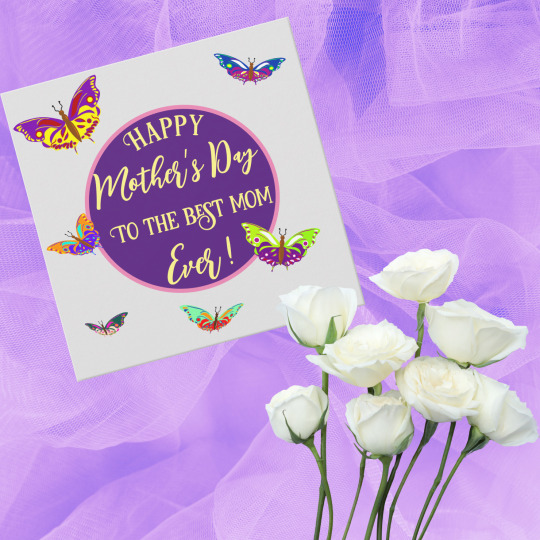
Mother's Day card from Fantabuloustef Zazzle Collection.
When it comes to creating art for online Print-on-demand platforms, one of the keys to success lies in understanding the trends and timing of the year. Knowing when certain seasonal events, holidays, or special occasions are coming up can help you create art that will be popular at just the right time. There are certain important dates throughout the year that define what people are looking for and when they’re looking for it.
A few weeks ago, I began the exciting task of preparing collections of cards for Mother's Day. As I delved deeper into the subject, I discovered that Mother's Day celebration dates may vary across countries, and quickly realized I was running behind in preparig my creations for some of them! So, I decided to dig a bit deeper into this topic, and to share my findings in this post.
Brief History of Mother's Day
The observance of modern Mother's day, has its origins deeply rooted in history. This celebration can be traced back to various ancient cults and festivities. Initially, it was primarily focused on celebrating motherhood as the act of giving birth. However, with time, it evolved to encompass the aspect of children's care as well.
The earliest recorded evidence of any type of mother-centric holiday dates can be found in Egypt pharaonic tradition. (starting around 3000 BC)
For thousands of years, the Ancient Egyptians celebrated a yearly festival to honor the beloved goddess Isis, who was known for her embodiment of the perfect mother and wife. Isis was married to her brother Osiris, who was tragically killed by their jealous brother Set. Undeterred, Isis collected his scattered body parts and used them to conceive their son Horus. Horus later avenged his father's death by killing Set and became the first ruler of Egypt, thus making Isis the mother of all pharaohs and a symbol of motherhood.
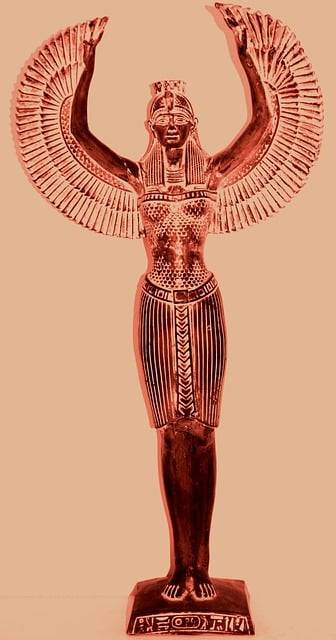
Isis statue - Picture by Liliane Caliste from Pixabay
Ancient Greeks used to organize a yearly festival during spring known as "thesmophoria" which was dedicated to Rhea, the mother goddess figure (From 1100 BC). This festival involved rituals such as offerings made by daughters for their deceased mothers who had passed away during childbirth or sicknesses related to childbearing process.
It also included feasting together with family members while exchanging gifts among each other - practices still observed today on Mother’s day celebrations worldwide!

Painting : Thesmophoria' by Francis Davis Millet, 1894-1897 - Brigham Young University Museum of Art
The phrygians also held a festival for Cybele, the Great Mother of the gods. It was celebrated in Anatolia (modern-day Turkey), in the spring and included processions, music, dancing, and sacrifices. This festival was an important part of the culture and religion of the people of Anatolia and was celebrated for centuries. It was a celebration of the power of motherhood and fertility and was a way of honoring the divine feminine. The festival also celebrated the bond between a mother and her children.
The Roman Empire had their own version of "thesmophoria" known as “Matronalia” which honored Juno Lucina - the patroness deity associated with fertility and childbirth. Traditionally, the festival was celebrated on the 1st of March and was marked by feasting, offering of prayers, and giving of presents. In addition to honoring Juno, the Matronalia Roman Festival was also a time of celebration for all women, as it was believed to bring them good luck and fertility. (7th century BC)
During the Middle Ages, a tradition began to gain popularity in medieval England, which granted those who had moved away from their home parishes the opportunity to visit the place of their birth and their mothers on Laetare Sunday, the fourth Sunday of Lent. This custom soon became known as Mothering Sunday in Britain, and with the passage of time, it evolved into what we now know as Mother's Day.
In India, the festival of Durga Puja, (Durga : the mother Goddess), is also considered as one of the roots of the modern Mother's day celebrations. It is believed to have originated in the 16th century when King Krishnadeva Raya of the Vijayanagara Empire is said to have organized the first Durga Puja.
Since then, it has become an important part of Hindu culture and is celebrated with great enthusiasm and devotion.
The reason for commemorating this festival is not limited to expressing reverence to the divine, but also to acknowledge motherhood and its exceptional virtues like boundless love, tenderness, and nurturing. These endearing qualities have been bestowed upon their children by mothers for ages, without anticipating any reward except the contentment and joy of them. According to Hindu mythology, Maa Kali (an incarnation of Maa durga) is believed to have created the universe out of her sheer compassion towards her offspring. Thus, she represents the epitome of selfless love, which is both affectionate and tender.

Durga Puja - Photo by Souvik laha
Modern Mother's Day adoption
The international Mother's Day originated from the United States and takes place the 2nd Sunday of May.
Anna Jarvis of Philadelphia initiated the movement for a dedicated holiday to honour mothers in the United States after her personal loss in 1906. Within five years, nearly every state observed the day and in 1914 President Woodrow Wilson finally declared the second Sunday of May as "Mother's Day" throughout America.

Portrait of Anna Jarvis
Progressively, the celebration has evolved, to encompass additional individuals such as grandmothers and aunts who plays mothering roles.
The day initially meant for showing respect gradually transformed into a day of exchanging greeting cards and presents. Jarvis, the founder of the holiday, spent her final years protesting against its commercialization and striving to eliminate it altogether.
Mother's day contemporary celebrations around the world.
The second Sunday of May, which was first introduced by the United States, has now evolved into the globally celebrated "International Mother's Day." Many countries have officially adopted this modern date for honoring mothers, including the United States, India, Canada, Japan, Australia, South Africa, and many more.
Numerous countries worldwide share a similar set of customs and routines to commemorate Mother's day. These include sending cards, presenting gifts and flowers, and taking their mothers out for a special meal. Moreover, it's prevalent for kids to create their own handcrafted cards or gifts to express their affection, gratitude and love towards their moms.
In the following section, I have delved into the unique and distinct aspects of celebrations across various countries, including the dates he dates opted by those who do not follow the international date.
Specificities for a few countries that celebrate the international mother's day
United States
In United States, a notable fact is that it's usual to offer lilac or roses but also large hydrangeas to symbolize gratitude.
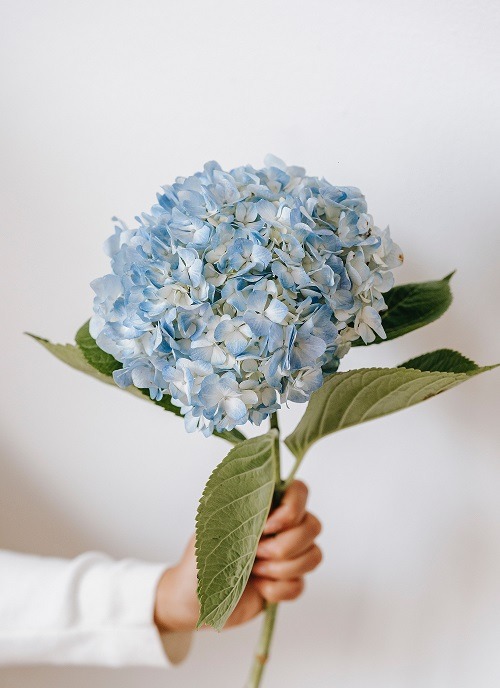
Hydrangea - Photo by Teona Swift
Canada
In Canada, it is a day to honor mothers, grandmothers, and mother figures. In addition to the customs adopted worldwide, some counties will also celebrate with a Mother’s Day mass or special church service.
Every year, cities across Canada host the annual Mother's Day Walk, a fundraising event that supports local charities and organizations which help women and children. This action is a great opportunity for participants to pay tribute to their mother, grandmother, or any other special woman in their life. Typically, the walk covers a distance of 3-4 km and is filled with fun activities and entertainment. Sometimes, there's a memorial section where participants can honor their loved ones by leaving flowers or mementos. This event is an excellent way to celebrate motherood while also contributing to a worthwhile cause.
India
In India, Mother's Day is celebrated with great enthusiasm and joy. The traditional Indian way to honor mothers is to give them gifts and express their gratitude. On this day, families come together to celebrate the important role mothers play in our lives. People may exchange gifts like traditional Indian sweets, flowers, jewelry, and fabric.
In many parts of India, children may even put a vermilion mark on their mother's forehead as a sign of respect and love.
Additionally, in Hindu households, Mother's Day is often celebrated with great religious reverence. People come together to perform puja to the divine mother, Durga, to ask for her blessings on their mothers and families. It is a special day to honor the powerful energy of the mother of the universe and to show gratitude for the unconditional love she provides.
Japan
In Japan, the celebration is gaining popularity, since it corresponds to the traditional principles of respect for parents and the elderly. It is now known as Haha no Hi (母の日). The celebration was introduced to in the early 1920s, and it has become a popular holiday ever since.
Along with the general festivities, the day is also marked by visits to shrines and temples, where prayers are said for the health and happiness of mothers and other family members.
Japan's population is steadily declining. This can be explained in many ways, but the very low birth rate is often singled out. Japanese mothers are encouraged (at least by the Japanese government) to embrace their role as mothers more quickly and more intensely. For this reason, this national holiday offers a moment of welcome recognition to all these valiant women!
Australia
Mother's day tradition dates back to 1924 when Leichhardt Sydney resident Janet Heyden began visiting patients at Newinton State Home for Women. The hospital housed a number of mothers without families to care for them. To bring happiness into the lives of these abandoned mothers, Janet Heyden decided to present them with gifts with the help of the community. Another unique thing that sets Australian Mother's Day apart is the Chrysanthemum flower. This fall flower was chosen because its name in English contains the word mom.
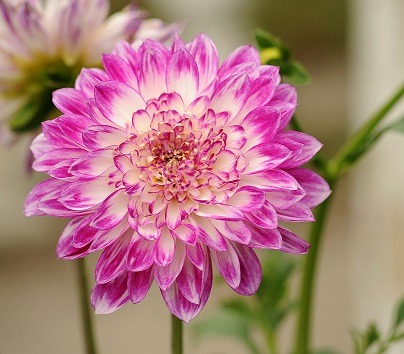
Chrysanthemum - Pixabay picture
A few countries that celebrate mothers on another day
United Kingdom
In UK, mother's day is the 4th Sunday of Lent and directly comes from the Mothering Sunday.
For this momentous occasion, in addition to the other traditional festivities, it is customary for girls to bake a special cake known as the mothering cake or "simnel cake", as a special tribute. This cake is composed of dried fruit and adorned with 11 marzipan balls, symbolizing the 11 loyal apostles of Christ, excluding Judas. It may also be topped with sugar violets.
Mexico
In Mexico, Mother’s Day is celebrated the 10th of May with a lot of enthusiasm and joy. May 10 holds significance because it was traditionally considered as the "pay day" in Mexico, allowing people to splurge on their mother's gifts or take her out for an extravagant dinner. Additionally, the month of May in Mexico is dedicated to honoring the Virgin Mary, one of the most renowned mothers in history.
Even though Mother's Day in Mexico was only established a little over a century ago, motherhood have been honored from ancient times. Mexico has long been a place where powerful matriarchs take center stage. Pre-Columbian civilizations like the Mayans had a rich pantheon of goddesses, led by Ix Chel - representing fertility and motherhood that were celebrated and honored.
Mother's day celebration are very happy and include dancing, music, food, and special gifts.
On Dia de las Madres, flowers are a popular gift, but for many Mexican moms, the most valuable present is something that money can't buy. On the morning of Mother's Day, children come together to serenade mom with the traditional song "Las Mañanitas". The heartfelt lyrics express their love and appreciation for their mother, and the sound of their voices, sometimes accompanied by a mariachi band, is the most meaningful Mother's Day experience.
youtube
Lyrics translation ( some variants exist):
These are the little mornings In which King David used to sing And on the day of your Saint So we sing it for you. Wake up, my dear, wake up, Look, it's already dawning, The little birds already are singing, The moon has gone away. How beautiful is the morning In which I'm coming to greet you, We all are coming with joy And are happy to congratulate you. The day that you were born All flowers were born too, In the baptismal The nightingales are singing. Day is already breaking And the light the day is making Gets us up in the morning, Look, it's already dawning.
I'd love to be a little sun To enter your window To say "good morning" to you While you're lying in your bed.
Four doves flew By every city Today because it's your saint's day, We wish you happiness.
With jasmine and flowers I will decorate this day, And today for being your saint day We have come to dance for you.
Thaïland
in Thailand, Mother's Day is celebrated on August 12th, which is the birthday of Queen Sirikit, the Thai mother figure.
On this day, making an offering to monks is an important part of the traditional Mother's Day ceremony.
It is also customary to give the mother of the family a jasmine garland, which is a traditional Thai symbol of respect.
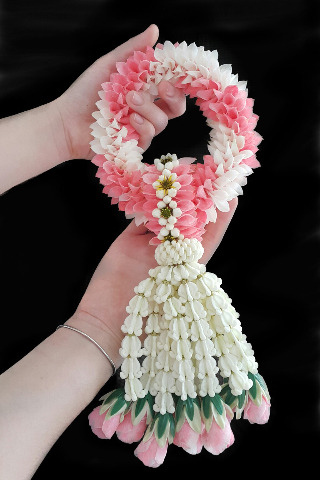
Traditional Thaï Jasmine Garland
Egypt
In Egypt, Mother's day is celebrated the 21st of March, first day of Spring. Back in 1956, a journalist and poet named Mustafa Amin initiated a year-long awareness campaign that led to setting aside a special date. He first proposed the idea in a poem he wrote in 1934, calling for a day to celebrate the contributions of mothers in Egypt. His poem argued that mothers deserved greater recognition for the hard work and sacrifices they made for their families and society.
Originally, the holiday was celebrated in August and was known as the "Festival of the Mothers of Egypt," or "Yom el-Omara El-Misreyeen" in Arabic. Over the years, the date of the celebration was changed to the 21st of March.
This special day is celebrated by treating mothers like queens, allowing them to rest and relax while others take over their daily tasks.
France
Mother's Day is observed in France on the final Sunday of May, but if it coincides with the Pentecost festival, then it is rescheduled for the initial Sunday of June. This will be the situation in 2023.
The tradition of celebrating Mother's Day has a heartwarming past. The original celebration dates back to the Napoleonic era, when Emperor Napoleon I established a day dedicated to honoring the mothers of large families. After World War I, an official Mother's Day was held in Lyon to pay tribute to the widows who lost their husbands during the war. The French government officially recognized Mother's Day in 1929, and in 1941, the Vichy Regime chose the last Sunday of May as the official date. Finally, after nine years, a law was passed that stated, "Every year, the French Republic pays an official tribute to Mothers during a special day dedicated to celebrating Mother's Day."
Conclusion
Mother's Day is a remarkable day of appreciation and recognition for mothers all around the world. It's a day that has been celebrated for centuries, tracing its origins back to as far as 5,000 years ago.
Over time, this celebration has evolved from being an ancient ritual to becoming a modern tradition that honors not only individual mothers but also all women serving in maternal roles across different cultures and countries.
In many countries it's celebrated on the second Sunday of May, that is now considered as the international Mother's day.
The ways of celebrating this special occasion vary according to cultural traditions, but one thing remains the same: Mothers are celebrated for their unconditional love and support.
In the introduction of this blog post, I initially intended to write about my beloved mother. However, I ultimately decided against it, as it would have monopolized the entire post. In my heart, she holds a special place as the most loving, devoted, and gentle person I have ever encountered. I am unsure whether this sentiment is unique to our bond or if it resonates with every child and mother across the globe.
Mother's Day makes us think of our moms and how much we love them, but let's not forget to remind them of our love and gratitude regularly! No matter where you live, if you are lucky enough to still have your mom around, show her your appreciation every single day!
If you have any unique customs or traditions in your country that you'd like to share, I'd love to hear about them in the comments section! I'm sure there's a lot I haven't covered in this blog post, so your input would be greatly appreciated.
Bibliography
Memorializing Motherhood: Anna Jarvis and the Struggle for the Control of Mother’s Day by Katharine Lane Antolini
History of mother's day: From ancient Egypt to modern times American University in Cairo
Mama Lisa's World International music & culture
Mother's day traditions around the world - Scholastic
Mother's day in India - Bhupinder Singh
Mother's day in Australia - Lepetitjournal Perth
Mother's day in Japan - furansujapon.com
Mother's day in Mexico - pinandtravel
Mother's day in Thaïland - Taste of Thaïland
Simnel Cake Recipe - BBC
Illustrations
Isis statue - Picture by Liliane Caliste from Pixabay
Painting - Thesmophoria' by Francis Davis Millet, 1894-1897 - Brigham Young University Museum of Art : Public Domain
Portrait of Anna Jarvis
Hydrangea - Photo by Teona Swift
Chrysanthemum - Pixabay picture
Traditional Thaï Jasmine Garland - Pxfuel
Discover my collection of cards and gifts for Mother's Day, most of them are downloadable if you're late !
#Youtube#mother’s day#mother's day gifts#mother's day customs#mother's day traditions#original art#mother's day card#fantabuloustef#artists on tumblr
3 notes
·
View notes